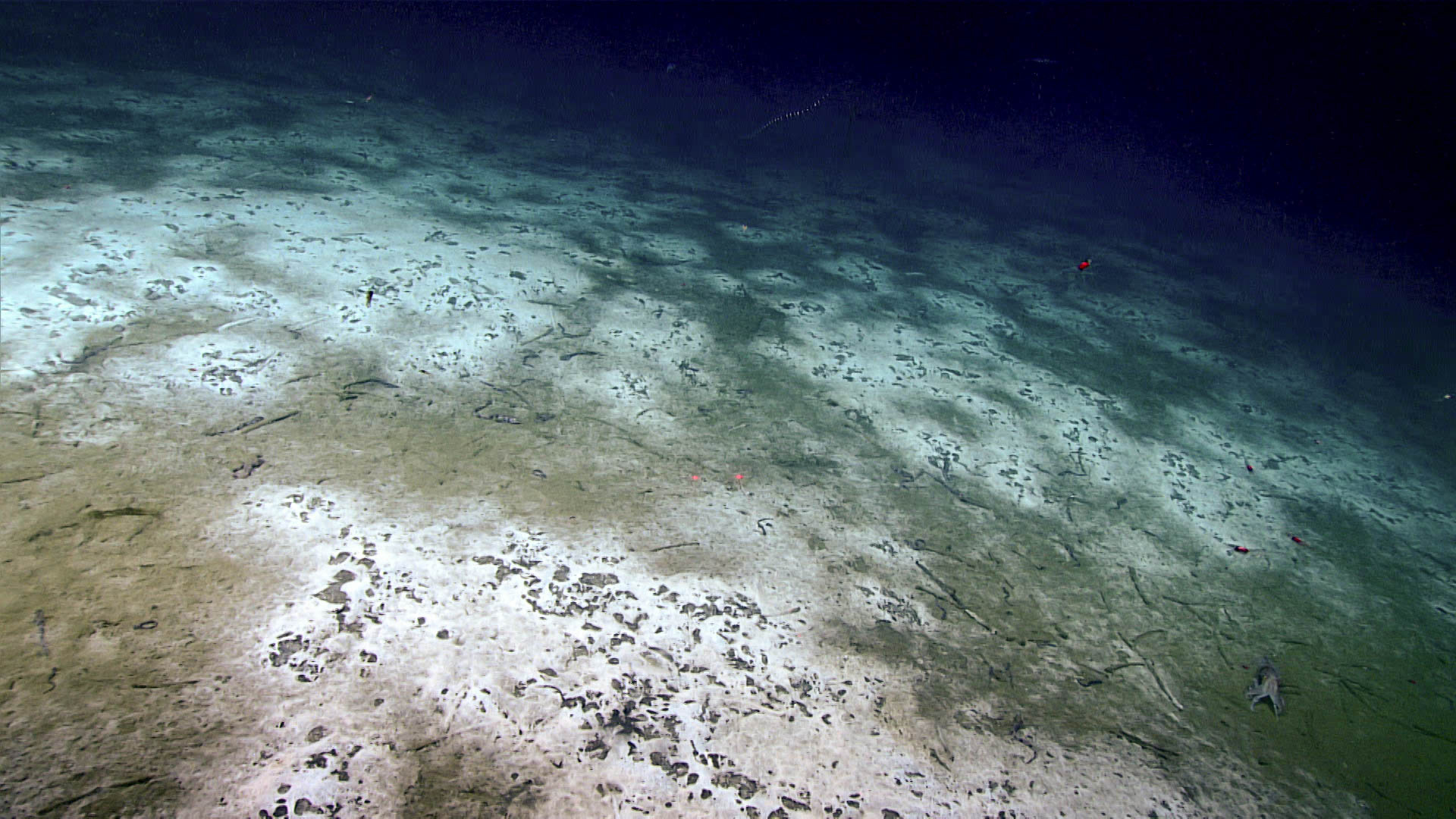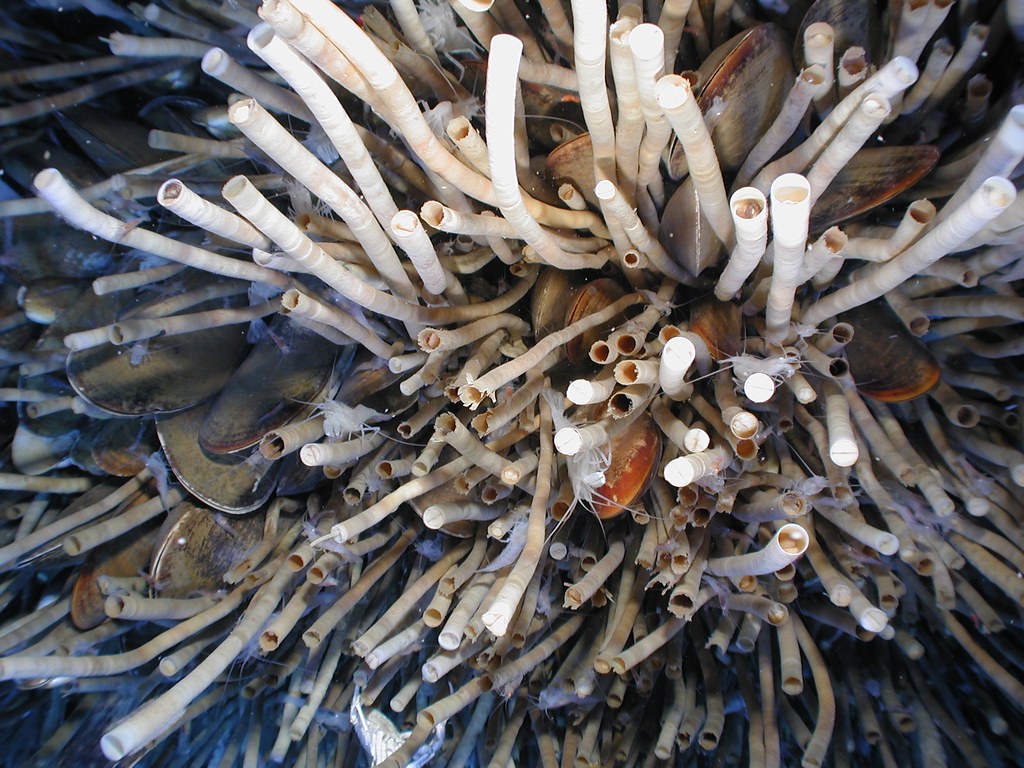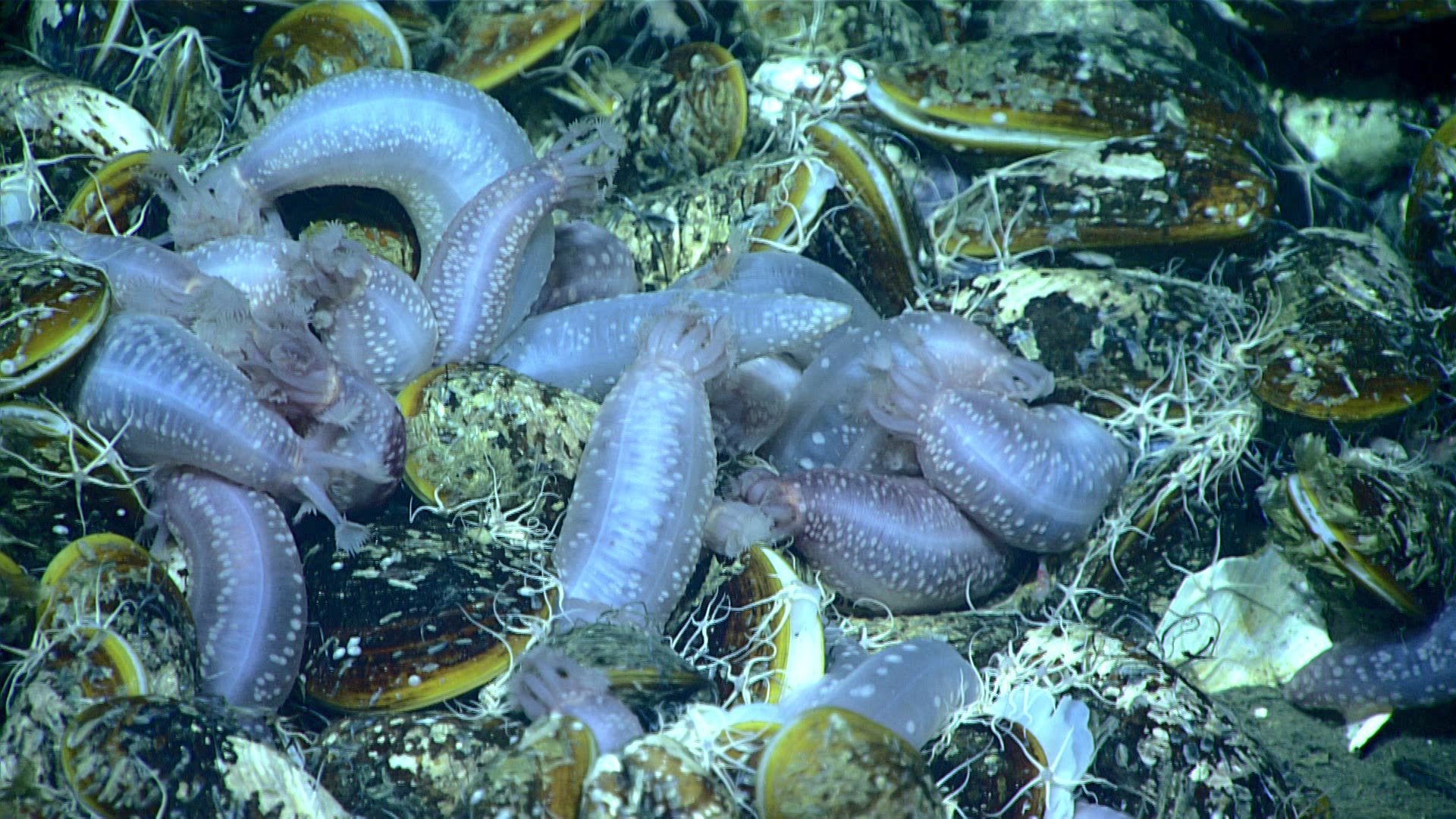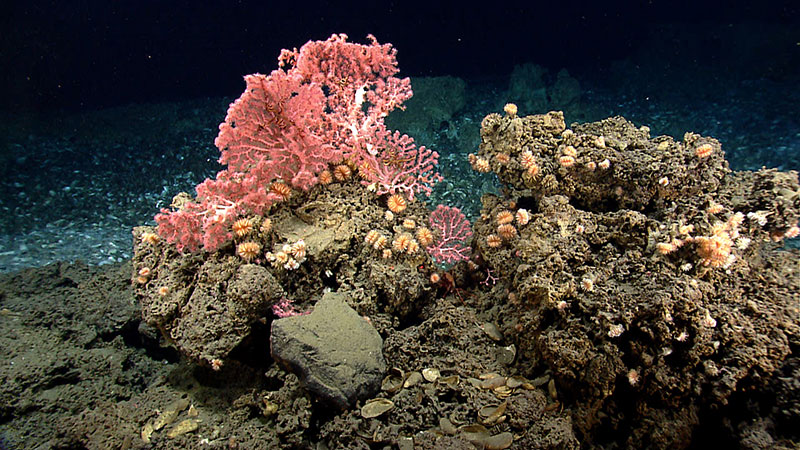Topic
Cold Seeps

Cold Seep Communities
The chemical compounds that emerge from cold seeps create a toxic environment in the surrounding waters. Yet, ocean explorers regularly observe dense and complex biological communities at seep sites. These communities develop over long periods of time. Different organisms arrive in phases, through a process known as ecological succession in which the community composition shifts from one set of species to another over time.
Ecological Succession in Action

At cold seeps, the first organisms to colonize a new site are microbes, including bacteria and archaea. The bacteria often form thick mats along the seafloor. These microbes not only withstand the harsh chemicals that emerge from seeps, like methane and hydrogen sulfide, they use them to make energy. This process of obtaining energy from chemicals (and not the sun) is known as chemosynthesis. The microbes use the energy harnessed from these chemicals to grow and reproduce. Overtime, the microbial activity produces calcium carbonate. As calcium carbonate is deposited on the seafloor, it forms a layer of rock. This provides a foundation for other species to colonize cold seep sites.

Overtime, the microbial activity produces calcium carbonate. As calcium carbonate is deposited on the seafloor, it forms a layer of rock. This provides a foundation for other species to colonize cold seep sites.
Dense beds of mussels or clams often form at seep sites and are nourished by symbiotic, chemosynthetic bacteria in their tissues that produce energy from methane. These bacteria are related to, but are not the same species as those that form bacterial mats.

Siboglinids tubeworms are a common seep species that lack a digestive system (no mouth, gut, or anus) but still require nutrition and oxygen. Similarly to seep mussels and clams, tubeworms get their food from billions of symbiotic bacteria that live inside their sac-like organ, the trophosome. Instead of methane, the bacteria use hydrogen sulfide as an energy source. The sulfide is not only absorbed from the surrounding water, but is also mined or taken from the sediments through the worms’ extensive “root” system reaching several feet into the seafloor. A tubeworm “bush” and can contain hundreds of individual worms, which can reach lengths over 3 meters (10 feet).

Mussels and/or tubeworms often dominate cold seep regions, creating complex habitats used by other organisms, such as squat lobsters, crabs, shrimps, sea cucumbers, and snails. Many of these animals feed directly on the bacterial mats or on the detritus produced by the mussels and tubeworms. Given the consistent, rich food supply and community complexity provided by seeps, many refer to these sites as “biological oases” in the deep sea.
Cold seeps do not last indefinitely. As the rate of seepage slowly decreases over time, methane-dependent mussels start to die off. At this stage, tubeworms can become the dominant organism of a seep community as long as there is some sulfide in the sediment. However, as the seep site becomes more inactive and hydrocarbon seepage completely subsides, the tubeworms also disappear. This allows cold water corals (e.g., Lophelia sp.) to settle on the now exposed carbonate rock structures. These corals do not rely on hydrocarbons for energy, but instead feed on particles in the water column.
Scientists are only beginning to understand the biological interactions and communities present at cold seeps. Further study is needed to better understand the role these habitats and the organisms they support play in the larger marine ecosystem.

